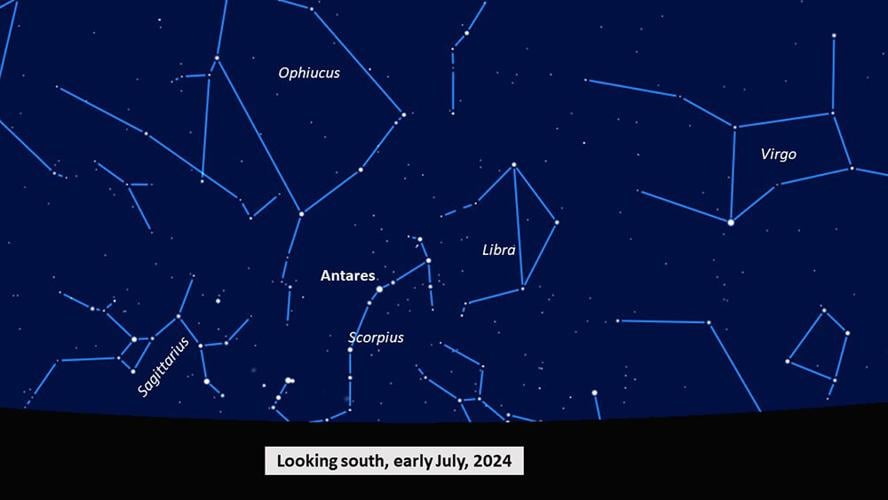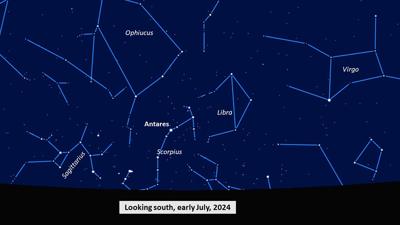
Welcome to July — we are already in the second half of 2024. Our first full month of summer features warmer nights and clearer skies (we hope!), but we continue to have a dearth of planets in our evening skies. But nights will start getting a bit longer — good for stargazing — and there is plenty to see of interest in both evening and morning skies.
If you want to see a planet on July evenings, you’ll have to get a good view of the low, western horizon and look right after sunset. You might be able to pick out little Mercury, which will be hugging the horizon. Venus will be visible too, although even lower in the sky. Both planets will be brighter than any surrounding stars, but the bright sky from the just-set Sun may make them difficult to see.
Early mornings are a different story. On July 1, early risers might catch Mars, just below the waning crescent Moon. On the third, the Moon will be just to the left of bright Jupiter.
On mornings of July 15-16, Mars and Uranus will be in close conjunction. The two planets will be just to the right of the Pleiades, a bright, easily-seen star cluster. On the 15th, Uranus will be just to the left of Mars, while on the 16th it will be above Mars. The two planets will be about 1 degree apart from each other, which is about twice the width of the full Moon in our sky.
A prominent July constellation, low in the southern evening sky, is Scorpius the scorpion. Look due south on July evenings, at 10 p.m. or so as darkness settles in. You should be able to make out a bright star about 20 degrees above the horizon. That is Antares, the brightest star in Scorpius and the 15th brightest star in our night sky. On July 16 you can use the Moon as a “pointer,” when the waxing gibbous Moon will be located to the right of Antares.
If you detect a reddish color in Antares, you are not mistaken. Antares is a red-giant star, one of the largest stars we can see. If Antares was located where our Sun is, the star’s outer extent would be between the orbits of Mars and Jupiter! Antares is sometimes called the “rival of Mars” due to its color, and the fact that Mars sometimes comes near Antares in our sky. Antares lies some 550 light-years from us, meaning the light reaching our eyes today left the star during the late Middle Ages, before Columbus sailed across the Atlantic.
Antares is also called the “heart of the Scorpion,” since it is roughly in the center of the constellation. Once you locate Antares, look for a line of roughly vertical bright stars to its right. That is the head area of the scorpion. Below Antares, a couple of bright stars make up part of the scorpion’s tail. The tail curves to the left (east) and is right on our horizon, making it difficult to see at our latitude.
July’s Moon is new on the 5th, with full Moon following on the 21st. On July 13, the Moon will pass in front of the bright star Spica, in the constellation Virgo. The event, called an occultation, will occur just before sunset. With binoculars you may be able to see the star “reappear” from behind the Moon when it re-emerges at about 8:35 p.m., about 10 minutes before sunset. Look for the Moon in the southern sky, and see if you can spot Spica!
























Commented
Sorry, there are no recent results for popular commented articles.